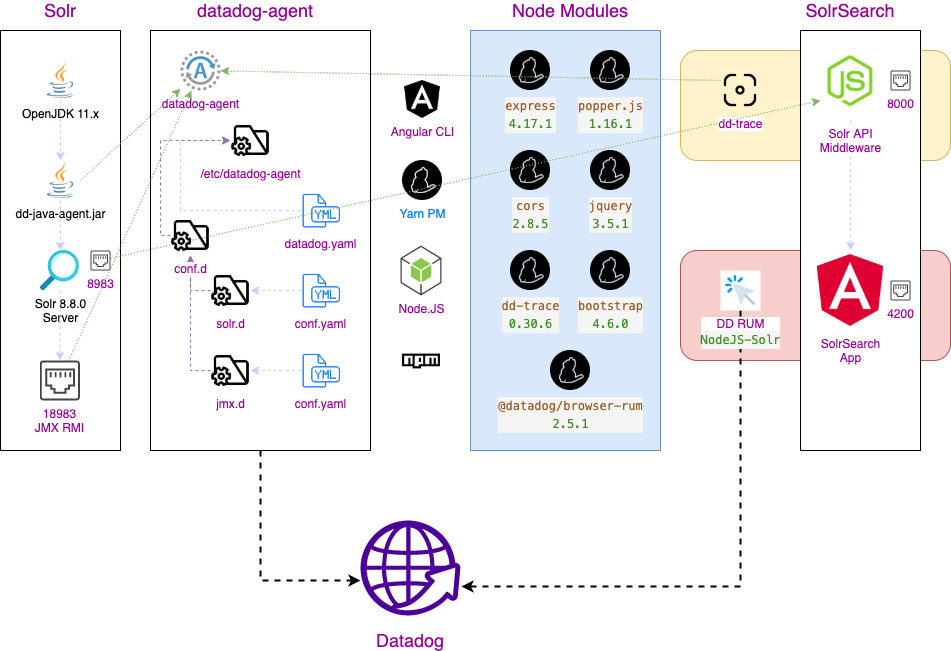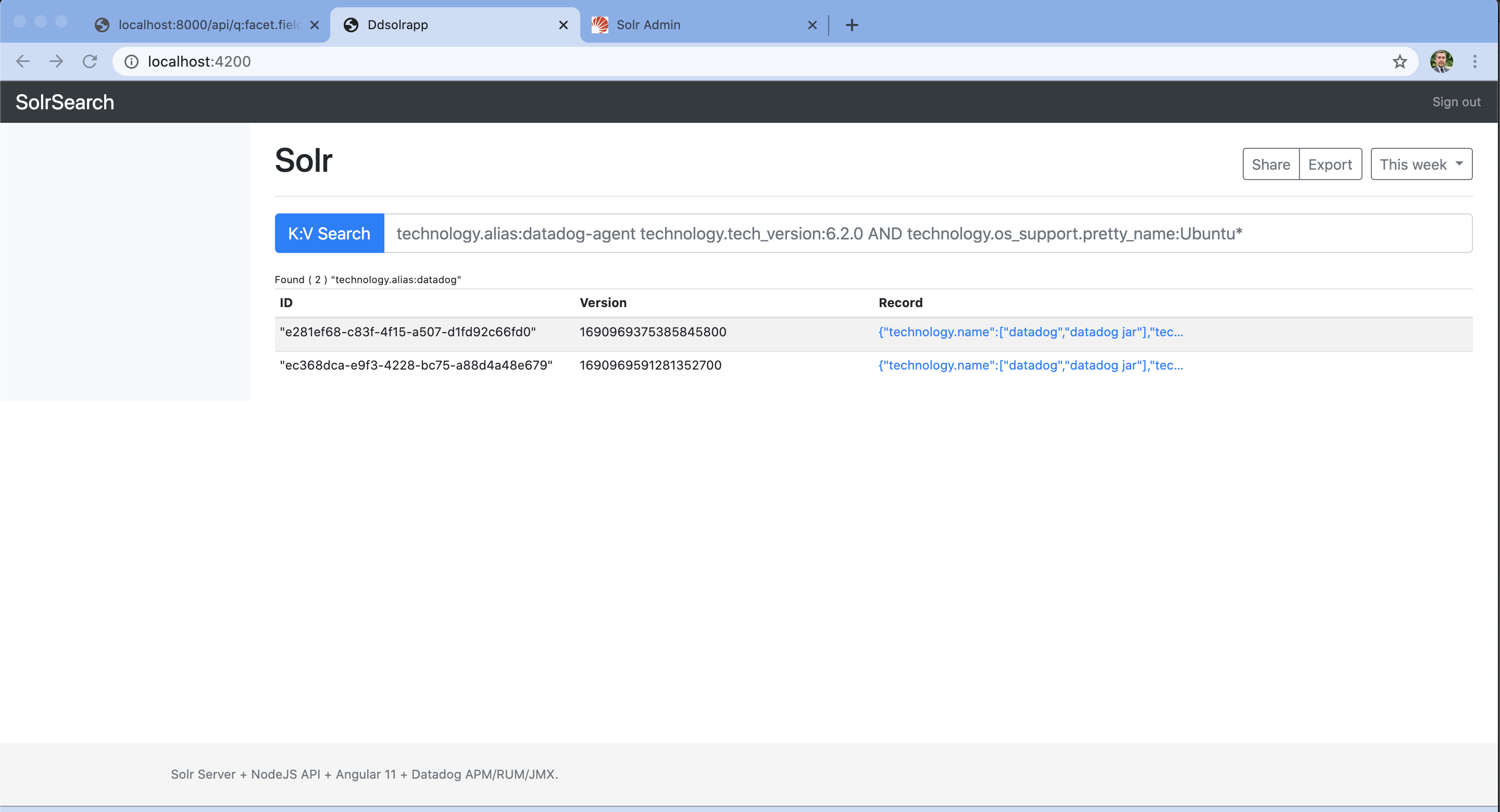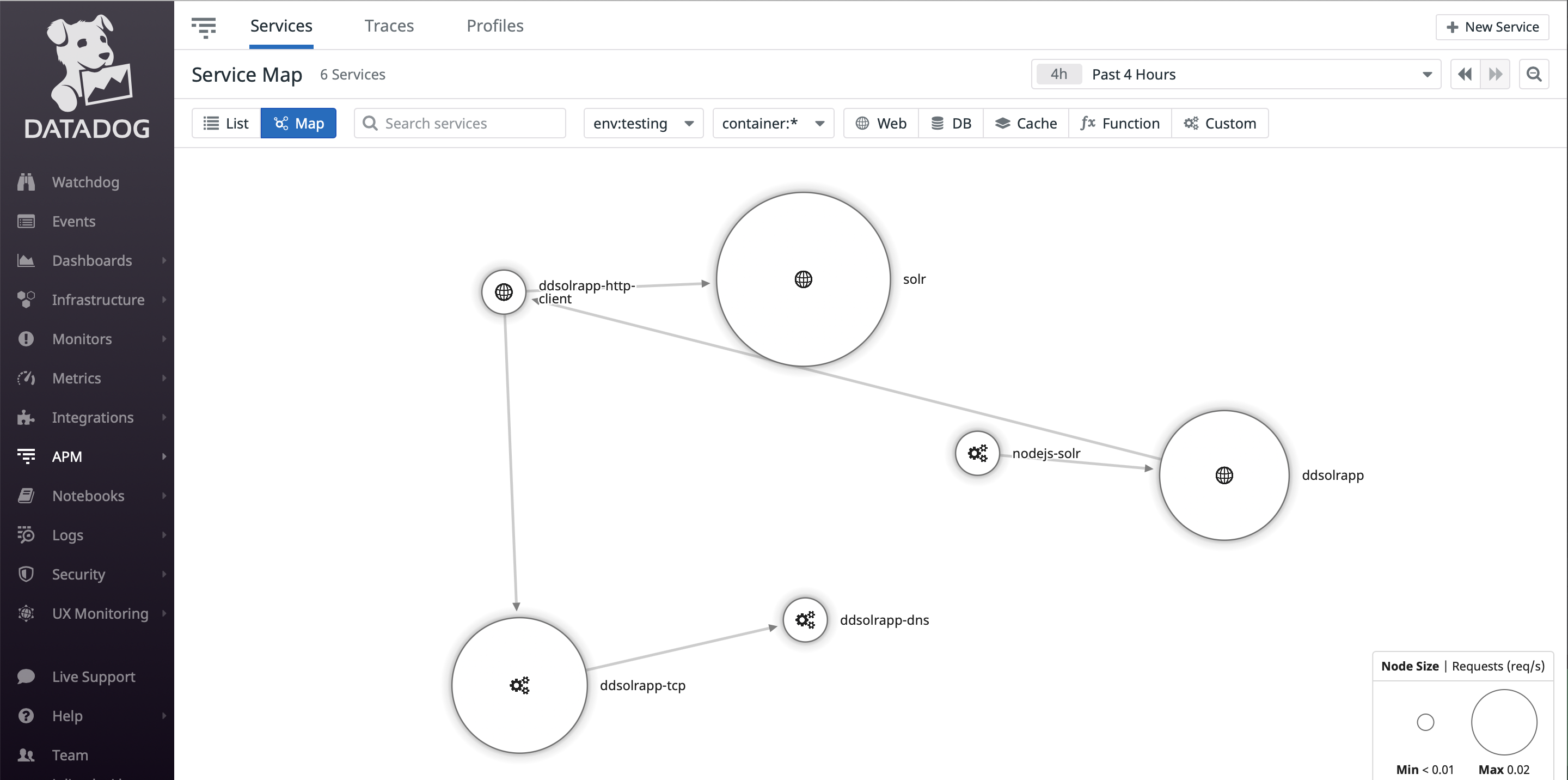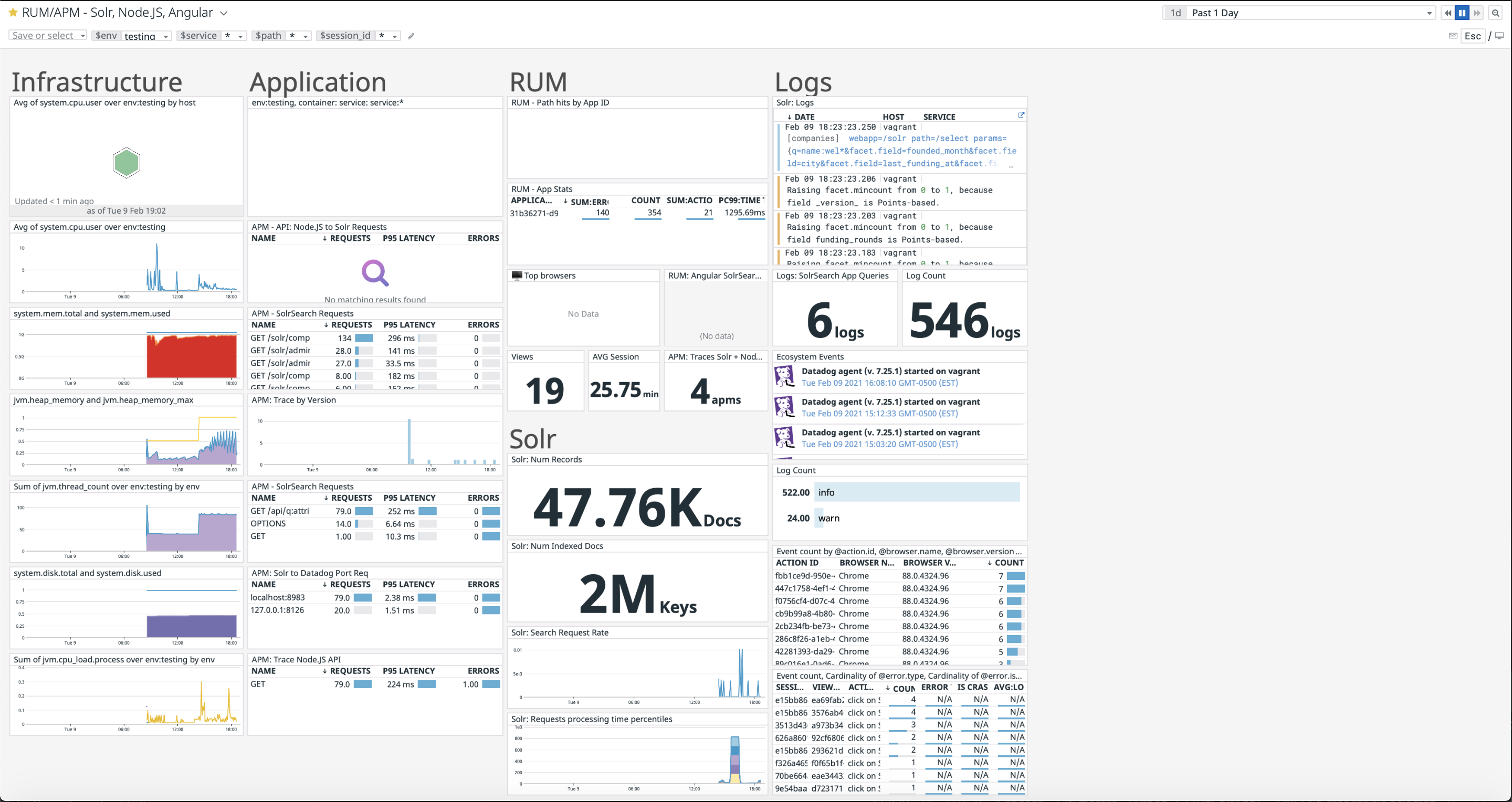The current project is used to test the integration of Datadog with Angular, NodeJS, Apache Solr in order to gain visibility and observability of the entire infrastructure.
The main purpose is to have full correlation from Infra, Traces, Logs, JVM metrics, APM traces on NodeJS applications, RUM activity.
I provide two scripts to get you started very quickly:
setup.sh "<DATADOG-API-KEY>": create & configure theVagrantfile.workspace/provision.sh: is registered within theVagrantfile.- Download & Install via script:
- Datadog Agent &
dd-java-agent.jar - Apache Solr: add Datadog JAR for APM tracing
- Node.JS, NPM, YARN Package Manager, Angular CLI 11.x
- Datadog Agent &
- Download & Install via script:
Solr
rmi.port=18983&dd-java-agentConfiguration
- Configurations are pushed by the
provision.sh
datadog-agentconfigurations:
/etc/datadog-agent/datadog.yaml- to enable Application Performance Monitor for Node.JS
apm_config:
enabled: true
logs_enabled: true/etc/datadog-agent/conf.d/solr.d/conf.yaml- to enable Solr integration
init_config:
is_jmx: true
collect_default_metrics: true
instances:
- host: localhost
port: 18983
logs:
- type: file
path: /var/solr/logs/solr.log
source: solr
# To handle multi line that starts with yyyy-mm-dd use the following pattern
log_processing_rules:
- type: multi_line
pattern: \d{4}\-(0?[1-9]|1[012])\-(0?[1-9]|[12][0-9]|3[01])
name: new_log_start_with_date/etc/datadog-agent/conf.d/jmx.d/conf.yaml- to enable JMX collection metrics (optional & not covered in this example)
dd-trace- to trace Node.JS middleware API (Solr to Node.JS)
node --require dd-trace/init nodeServer/server.js
@datadog/browser-rum dd-trace- for Datadog: Connect RUM & APM Traces in Angular 11.x app
- Inject the following into
workspace/ddsolrapp/src/app.components.ts
import { datadogRum } from '@datadog/browser-rum';
datadogRum.init({
applicationId: '<datadog-app-id>',
clientToken: '<datadog-client-token>',
site: 'datadoghq.com',
service: 'NodeJS-Solr',
env: 'testing',
version: '1.0.0',
sampleRate: 100,
trackInteractions: true,
// Enable APM tracing on the RUM transaction
allowedTracingOrigins: ["http://localhost",/http:\/\/localhost/]
});Once the Vagrant setup has completed, your will be logged into vagrant, in the event it does not just run vagrant ssh.
Use 2 separate ssh sessions to perform the following:
- Change directory to
cd /home/vagrant/workspace - Start the Node.JS server:
node nodeServer/server.js - Change directory into the app
cd ddsolrapp - Use yarn to install the npm modules
yarn install - Start the Angular App server:
ng serve --host 0.0.0.0 --port 4200--host 0.0.0.0will allow connections in your local host (outside of Vagrant)--port 4200is the Angular port for your web app
- Start the Apache Solr server:
sudo systemctl start solr- The script should have created a core named technoloy and loaded 2 records
- Test Apache Solr with
curl "http://localhost:8983/solr/technology/select?q=*:*
- RUM must be instrumented for Angular app server & Node.JS, please the Datadog RUM instructions when creating a new app, this will give you complete instructions for your system. Inject the RUM code for your Node.JS + Angular web app.
Architecture
SolrSearch
Query Apache Solr records through the SolrSearch app by going to http://localhost:4200/ and using the Datadog Tag approach to retrieve records. Below is a list of keys that can be used in the interface:
- Single key search:
technology.alias:Datadog - Multiple key search:
technology.alias:Datadog technology.name:datadog;technology.alias:Datadog AND technology.name:datadog; - Wildcard search:
technology.alias:Datad*Limited to a single wildcard search
"id","technology.alias","technology.name","technology.os_support.bug_report_url","technology.os_support.distrib_codename","technology.os_support.distrib_description","technology.os_support.distrib_id","technology.os_support.distrib_release","technology.os_support.home_url","technology.os_support.id","technology.os_support.id_like","technology.os_support.name","technology.os_support.pretty_name","technology.os_support.support_url","technology.os_support.ubuntu_codename","technology.os_support.version","technology.os_support.version_codename","technology.os_support.version_id","technology.tech_conf","technology.tech_confdir","technology.tech_firstconf","technology.tech_type","technology.tech_version"
solr- the Solr serverddsolrapp-http-client- the API callddsolrapp-tcp- the DD callddsolrapp-dns- the DNS DD request callnodejs-solr- the Angular RUM callddsolrapp- the Angular UI
The project's data points are now flowing into Datadog throught he different integrations. The dashboard contains a lot of great information needed to create a command center based on the SolrSearch App (Front End) to the Node.JS tracing + searching the Solr server records.
- Infrastructure: CPU, Memory, Hosts, JVM Heap, Disk
- Application: traces by service
- Real User Monitoring - RUM: Session, resources, views, browser
- Solr: requests, indexes, records
- Logs: correlation by request type
- Events: agent information
- All correlated elements by time, session, service, or view id



